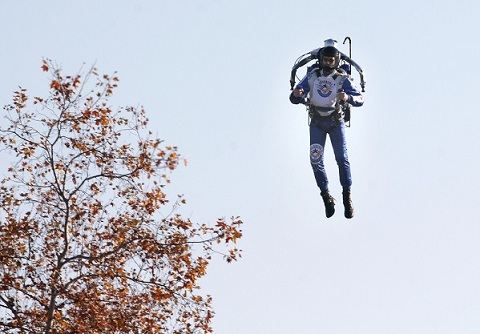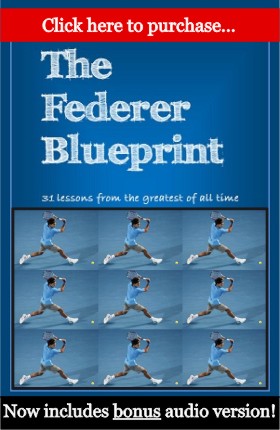The Multiplier Effect: Roger Federer’s Secret Weapon
30 Dec
Introducing the Multiplier Effect
When a child shows slightly above average tennis ability, this will often stimulate encouragement from parents (and coaches) to pursue further training and practice. If a parent adopts the idea that their child is special and has a chance to be successful, this can be the single most powerful factor in driving the child’s continued commitment to training, and therefore their success. This seed can be planted in the mind of a parent by an unexplained “natural” ability, early exposure to tennis, size or developmental advantages, early praise, or even pure parental bias. Regardless of the cause, the increased opportunities for quality practice that follow are the source of the extraordinary power of the multiplier effect.

How It Works
In tennis the multiplier effect works something like this:
- A child tries tennis for the first time, and shows better ability than average for his or her age. Contributing factors? For a 3 year old, anything from a love of chasing butterflies with sticks, to a love of playing with tennis balls could give them a head start; for a 9 year old it may be learning quickly due to good hand-eye co-ordination and athletic ability from playing other sports. It could also be the delusions of a loving parent. In Roger Federer’s case, he was ball-crazy, sports-crazy, and his parents were avid tennis players.
- Whatever the reason, this prompts continued participation and encouragement.
- Enjoyment by the child may cause him/her to seek out further opportunities to play (with friends, against the garage wall, at school, in the backyard etc). Federer’s parents remember the incessant thump, thump, thump of a tennis ball against their garage door, day and night. They may also begin to watch tennis on TV, adopt a favourite player and dream of emulating them.
- This increased playing time quickly raises their skills ahead of their peers. Any gap in ability that existed in comparison to other kids the same age, has now been exaggerated, and if the original talent was imagined it is real now.
- As a result of standing out from the crowd they are selected for coaching groups that train more often. In these groups, coaches notice his or her ability, earmark the child as talented and encourage the parents and child, and private coaching is offered. Such coaching was offered to Roger, and was subsidised by his tennis club, because the investment was warranted by his talent and potential.
- Now taking private and group coaching, the child is soon a standout for his/her age, perhaps wins a local tournament, and is selected for a regional squad with highly experienced coaches. They are now being offered opportunities that the other kids are not. Federer’s acceptance into the Swiss National Tennis Academy at age 14 is an example of a crucial opportunity that allowed him to increase the gap between himself and other good players.
As you can see a small initial advantage made possible another small advantage, which led to another. Each advantage presented an opportunity for greater quality and quantity of practice. Pretty soon a wide gap has opened between the player who had the initial advantage and one who didn’t. This gap can be so surprising to people that Daniel Coyle (author of The Talent Code) calls it the HSE (holy sh#t effect), because that’s what people say when they see a 6 year old with the skills of a 10 or 12 year old.
The Multiplier Effect can be artificial or contrived
A 2001 German study (Musch and Grondin, 2001) showed that this initial advantage need not have anything to do with natural abilities. They showed that players born closer to the cut-off date for an age-group (i.e. the older players in the age-group) had an initial advantage (due to a size and developmental headstart) that triggered the multiplier effect because these players were more likely to be selected for representative teams which were then given more specialised coaching. This effect is also discussed in detail in Malcolm Gladwell’s Outliers: The story of success.
Additionally, the research of Dr Carol Dweck and Benjamin Bloom has shown that the rate of improvement of students can even be influenced solely by the feedback given. In these cases positive feedback and praise for effort (rather than results) strongly influenced the desire of children to practice an activity further. In doing so, the studies created an artificial multiplier effect that caused a subset of the children to progress their skills more quickly than others. This accelerated progress occurred through improved attitude to practice and was not related to actual ability levels.
The bad news for late starters
The multiplier effect highlights some of the reasons why it is difficult for late starters to catch up to early starters (who continue with optimum training levels):
1) The top coaching organisations select those who perform best in their age-group (the same applies to sponsorship, scholarships, and selection for representative teams). These people then get more specialised training that it is difficult for others to match without the same support.
2) Accumulated practice hours count, not current practice levels. Which means that to catch up you have to practice more or better than players already at the top. This is difficult if they are already training at high levels with strong support. Drastically increased training loads for the late starter are difficult to maintain and could lead to injury and burnout.
3) Belief in their own ability/potential (as well as the belief of parents and coaches) is primarily based on their performances. It is more difficult to believe in your ability to reach the top, if there are other players well ahead of you.
The good news for late starters
If you understand the power of creating and taking opportunities that increase your quantity of high quality practice, you’ll understand that a series of accelerating opportunities can take you further than simply starting early.
How to harness the multiplier effect
The concept of natural talent is not supported by hard evidence, as we have discussed in previous posts (Natural Talent: Fact or Fiction), BUT the illusion itself is very real indeed. This is important, because it motivates parents and coaches to provide crucial support (time and money) and encouragement, so if you are able to get to a level above your age-group peers (by any means and especially working hard), you are best positioned to stand out. And standing out is your key to tapping in to the multiplier effect.
Have you seen the Multiplier Effect in action? Or harnessed it yourself? If so, I’d love for you to comment below.

